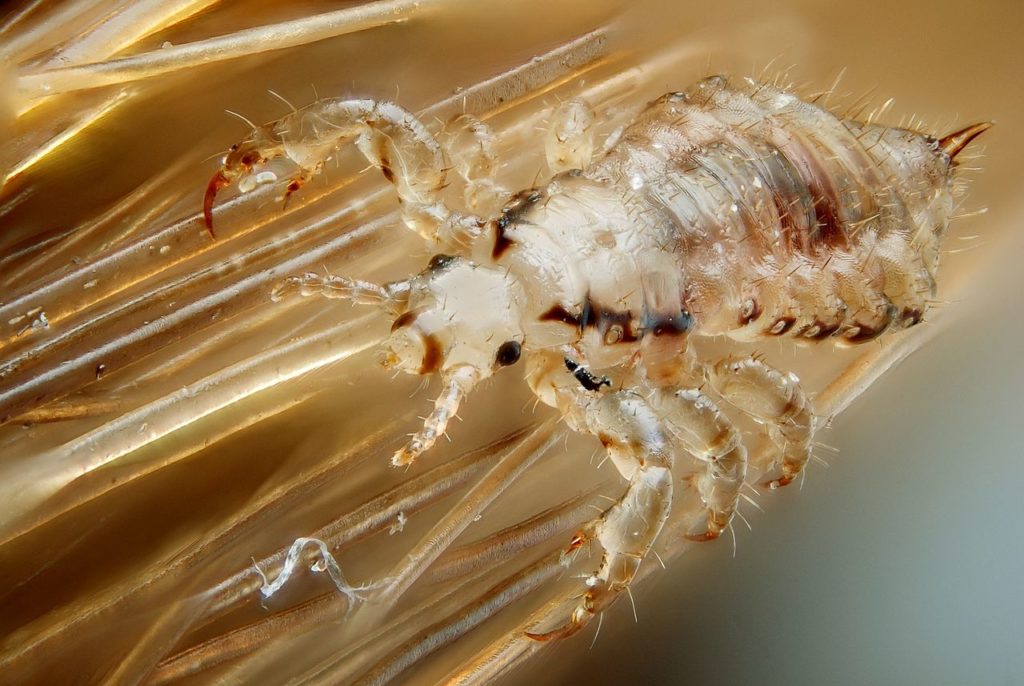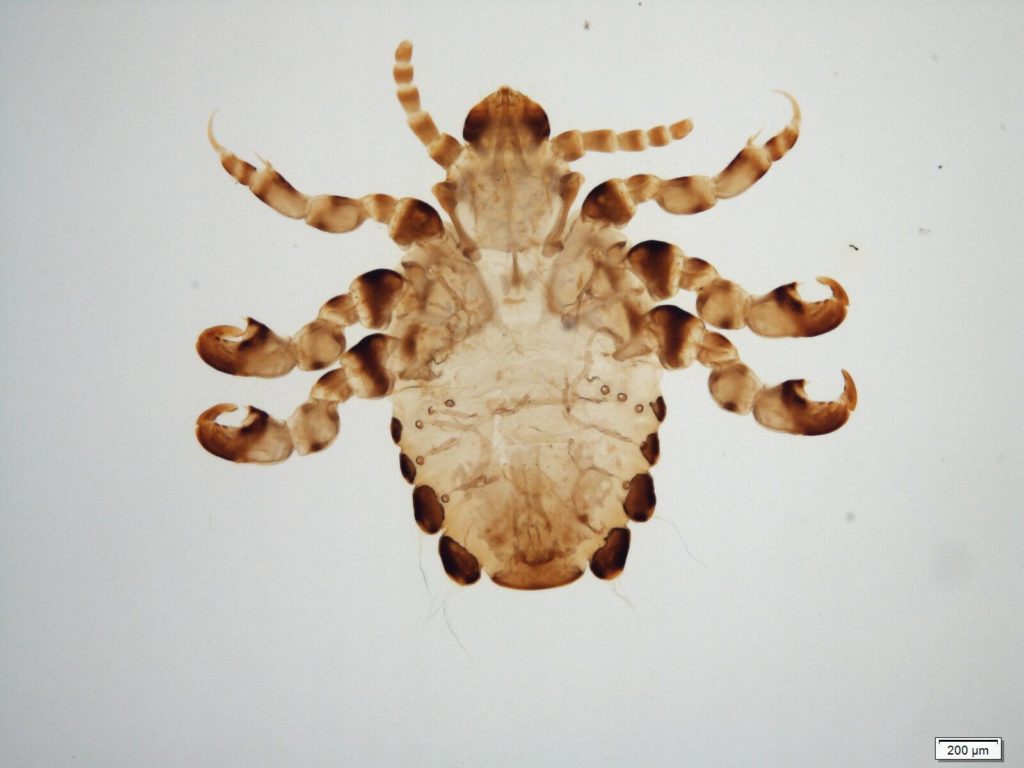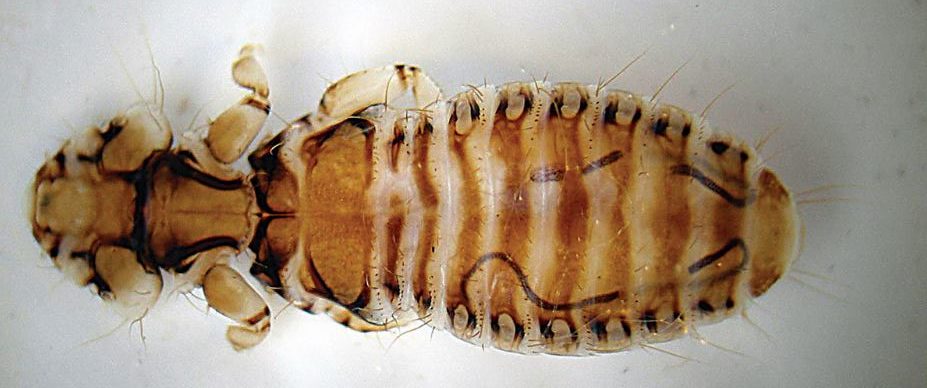Sucking and biting lice
Lice are unique among the insects in being ectoparasitic in both the juvenile and adult stages; indeed all stages of the life-cycle are spent on the host’s body.Although they are very common, few people study the group and many people never see them at all unless they study the bird or mammal hosts.
Traditionally the group was divided into two separate orders: the Anoplura, or sucking lice (also known as Siphunculata), which are all blood-feeders on mammals; and the Mallophaga, the chewing or biting lice, which feed on feathers, fur, blood etc. on both birds and mammals. The apparently radical differences in mouthparts delayed their combination in a single order, but the monophyly of the Phthiraptera is now accepted.
 Male human head louse, Pediculus humanus capitis Credit Gilles San Martin
Male human head louse, Pediculus humanus capitis Credit Gilles San MartinMost authorities now recognise four suborders; the Anoplura are unchanged, but the former Mallophaga are now divided into three, the Amblycera (on birds and mammals), the Ischnocera (also on birds and mammals) and the Rhyncophthirina (on elephants and wart-hogs). There is now evidence that Phthiraptera may be a subgroup of the Psocoptera, which would make the latter a paraphyletic group.
All adult lice are wingless and dorsoventrally flattened; the eyes are reduced or absent and they usually have well-developed claws for clinging to their host. Most lice are just a few millimetres long. The mouthparts are of two distinct kinds: in the more generalised ‘chewing’ suborders the mandibulate mouthparts are used to bite and chew sections of feather, fur or hair, though feeding on skin is also recorded. The resultant irritation may cause the host to scratch the site, leading to small wounds and the lice then feed on the blood; some will also eat sebaceous secretions.
 Pthirus gorillae Credit Frost Museum
Pthirus gorillae Credit Frost MuseumIn the more specialised Anoplura the mouthparts are highly modified into piercing stylets which are normally retracted into the head but are everted to pierce the mammalian host skin, inject anticoagulants and feed on the blood directly.
Most species reproduce sexually, though parthenogenesis is known in some cases. The eggs are glued to the hair or feathers of the host and will only hatch if the host’s body temperature is sufficiently high. There are usually three nymphal stages, and the whole life-cycle may take only a few weeks in favourable conditions. Young or unfit hosts may carry larger populations of lice, and there is evidence that some hosts can develop immunity, which helps to control the numbers of parasites.
Most lice species are highly host-specific, often restricted to a single host species, and even confined to certain body areas of the host. The often close association between lice species and their hosts has made them a popular group for studying coevolution, and many phylogenetic trees have been drawn up to show how lice groups must have evolved along with the relevant bird or mammalian groups. There are, however, several anomalies in such theories that can be hard to explain.
 Trinoton anseriunum parasite of swans and ducks Credit Lajos Rozsa
Trinoton anseriunum parasite of swans and ducks Credit Lajos RozsaAlthough nearly all bird species have lice, some mammalian groups have none, and these include monotremes, bats and whales. The sensitivity of lice to changes in temperature might explain why they have not spread to bats which hibernate; also one might assume that marine mammals would be safe from lice because of the frequent immersion in sea-water. In fact, lice do occur on some hibernating mammals, and seals also have specialised lice which can only breed when the seals come on land.
Worldwide there are around 5,000 known species in 24 families; in Britain there are about 540 species in 17 families.
Identification help